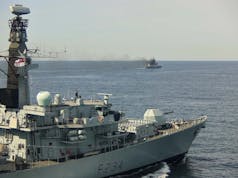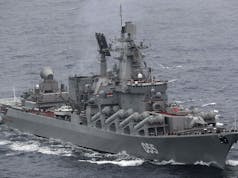Lockheed Martin has partnered with the U.S. Navy to integrate hypersonic strike capability onto surface ships.
In this regard, the U.S. Navy has awarded Lockheed Martin a contract valued at over $2 billion, subject to all options being exercised.
The contract involves integrating the Conventional Prompt Strike (CPS) weapon system onto ZUMWALT-class guided missile destroyers (DDGs). CPS is a hypersonic boost-glide weapon system that allows for long-range missile flight at speeds exceeding Mach 5.
Under the terms of the contract, Lockheed Martin, as the prime contractor, will be responsible for providing launcher systems, weapon control, All Up Rounds (AURs), which are the integrated missile components, and platform integration support for this naval platform.
The company, together with industry partners such as subcontractors Northrop Grumman and General Dynamics Mission Systems, is committed to providing sea-based hypersonic strike capability by the mid-2020s.
The contract also includes additional AURs plus canisters for the U.S. Army’s Long Range Hypersonic Weapon (LRHW) testing, training, and tactical deployment.
CPS can be launched from multiple platforms, including surface ships, submarines, and land-based mobile launchers, and shares a common AUR with the Army LRHW. Lockheed Martin is the prime systems integrator for both the CPS and LRHW weapon systems.
Hypersonic missiles, or hypersonic vehicles, are highly manoeuvrable and can travel at speeds exceeding five times the speed of sound. By combining the CPS capability with the stealth and mobility of the ZUMWALT-class destroyer, the nation’s first sea-based hypersonic strike capability will be realized.
Fielding CPS on the ZUMWALT-class destroyer is a necessary and important step towards equipping the warfighter with a capability that embodies Lockheed Martin’s 21st Century Security vision in support of its customers.














The CPS will in future be fitted to the Virginia class SSNs, later blocks having extra vertical launch tubes to help make up some of the lost capability when the Ohio class SSGNs retire. The SSN(R) Astute replacement is likely to share the design of vertical launch tubes and potentially also be equipped with CPS as well as vertical launch TLAM.
We can live in hope. Also hopefully SSNr might be built at speed to enable a total fleet greater than a miserly 7 SSNs.
The Australian need for SSN will hopefully keep minds focussed on the development of SSN(R)
We should be able to, the limit on 7 built was as much about the funding gap…we did not start build anything between HMS vengeance being started in in 1993 and launched in 1998…before 1995 we always had 2-3 nuclear submarines being build…after vigilance was launched on 1995 we only had vengeance being build then when venesection was launched in 1998 we had nothing being build…..until 2001. Basically the John major government buggered the production and we have been running catch up ever since. We should have had the first SSN cutting steel in 1993 when victorious was launched…ready for launch in 2001 ish with the next SSN cutting steel in 1995 for launch in 2003 and then the third cutting steel in 1998 and ready in 2006. So we could have been 2 to three boats ahead of the game…UK production of nuclear subs should give us the ability to sustain 15 boats of all types if the money is there.
Just speculation but I wonder if these launchers might make it into the T83 too along with mk 57 launchers?
Sort of thing that might appear in early graphics but would soon be cut when the bean counters got to work. SSN(R) is a more likely host as the torpedo tube launched variant of TLAM will be leaving service, requiring vertical tubes to maintain that capability.
Extend the life of a vanguard class for a few years until a fitting replacement is found. Granted, the sub and missile would need to be modified, and if the MOD is willing to fund them is another question.
I like the idea of the Mk57, but so many are still using mk41 around the world, including the US Navy, that it’s hard to see us blazing a trail with T83. I’d personally prefer we went with Sylver 70s, but with all new frigates seeming to lean towards the Mk41, I’m guessing we’ll just qualify Aster missiles for them.
Currently running at a post development construction cost of $80m each these missiles, same as a fighter jet.
I think the prime target they have in mind for these are North Korean TELs, preparing to launch nuclear strikes, so that price tag in those circumstances would be worth every penny.